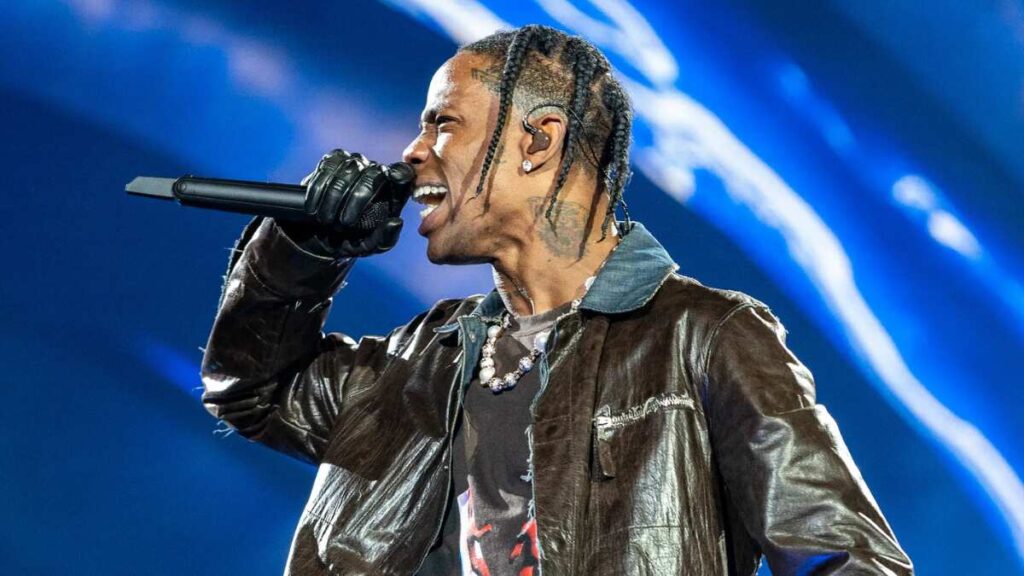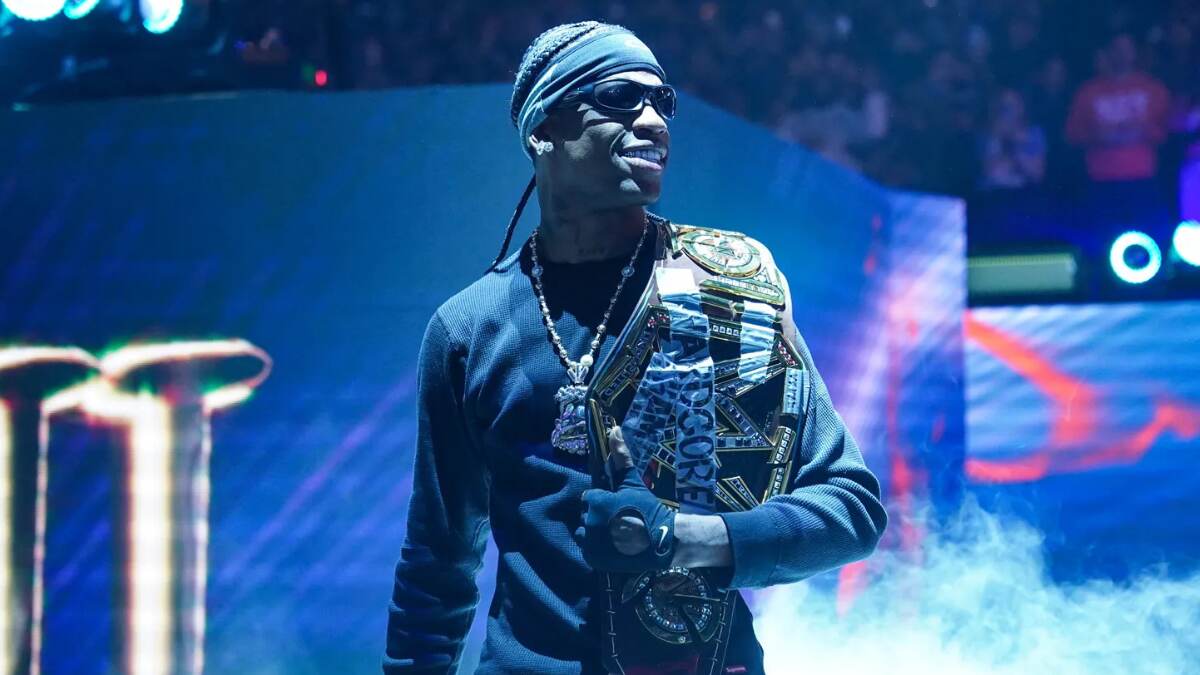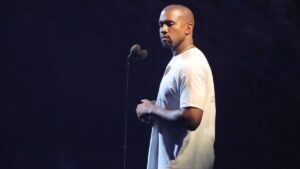Travis Scott is everywhere—and that’s not an exaggeration. Whether it’s his face on a Dior campaign, his name tied to a sold-out Nike drop, or his latest sonic universe crashing streaming records, Scott’s cultural presence stretches far beyond the studio or stage. He’s not just making music; he’s orchestrating moments that merge fashion, tech, hype, and youth rebellion into one seamless experience.
In an era where artists are expected to do more than just create—they must shape culture—Travis has emerged as one of the most effective architects of our time. He builds moods, movements, and marketplaces with equal fluency. If Drake dominates the charts and Kanye bends the rules, Travis makes you feel like you’re stepping into another dimension entirely.
This article isn’t here to tell you he’s a talented rapper—you already know that. Instead, we’re unpacking the layered phenomenon of Travis Scott: a man who turned his vision into a full-blown aesthetic, a marketing machine, and a mirror for a generation chasing meaning in chaos.
By the end, you’ll see why La Flame is in a category all his own.
Soundtracks for a Generation Hooked on Escapism
The Cinematic Trap Sound of La Flame
Listening to a Travis Scott track often feels less like pressing play on a song and more like slipping into an alternate reality. His sound isn’t just music—it’s atmosphere, mood, environment. Tracks like “STARGAZING” or “90210” don’t follow traditional structures; they unfold like dream sequences, stitched together by echoing synths, pitch-shifted vocals, and sudden beat switch-ups that disorient and hypnotize in equal measure.
This immersive quality is no accident. Collaborators like Mike Dean lend spacey, analog depth to Scott’s records, while Metro Boomin injects trap roots with eerie, cinematic tension. It’s not about catchy hooks or clever bars—Travis builds sonic environments you can live inside.
For Gen Z, a generation raised in chaos and digital escapism, this kind of sound hits different. It mirrors their reality—fragmented, hyper-stimulated, emotional. The haze, the distortion, the layered melancholy—it all resonates more as feeling than storytelling.
In Travis’s world, music doesn’t just play in the background. It surrounds, consumes, and sometimes even swallows you whole. That’s not just a trap—it’s theater.
Lyrical Vibes Over Literalism
Travis Scott’s lyrics have long been a target for critics who search for clarity and come up short. But that’s missing the point. His words aren’t designed for literal dissection—they’re fragments of feeling, coded mantras meant to enhance the mood, not explain it. Lines like “It’s lit!” or “I get those goosebumps every time” aren’t groundbreaking in content, but they hit with undeniable emotional weight, especially when layered over his sprawling, surreal production.
Where rappers like Kendrick Lamar or J. Cole tell stories with precision and intent, Travis opts for texture over thesis. His lyrics are more about energy than exposition—flashes of desire, paranoia, nostalgia, and excess all melting into each other.
This non-linear, vibes-first approach resonates with a TikTok generation fluent in remix culture and emotional shorthand. In a world where attention is splintered and art is consumed in seconds, Travis’s lyrical style speaks fluently: it doesn’t need to be understood to be felt.
Streetwear Prophet or Brand Whisperer?
Utopia, Jordan, and the Merch That Sold Out in Minutes
When Travis Scott drops merch, the internet breaks. It doesn’t matter if it’s a $60 tee from the Utopia rollout or his latest Jordan 1 Low—the frenzy is immediate, the sellout is swift, and the resale market goes wild. But this isn’t just product hype. It’s cultural currency.
Unlike standard influencer-brand pairings, a Travis Scott collaboration feels like an extension of his world. The design language—earth tones, distressed textures, cryptic slogans—reflects the same moody surrealism found in his music and visuals. Each drop is more than apparel; it’s a fragment of La Flame’s mythology.
Fans aren’t just buying sneakers or shirts—they’re buying proximity to a lifestyle. The chaos of his rollouts, the countdown timers, the surprise restocks—it all feeds into the theater of modern hype culture, where scarcity equals status.
Travis isn’t selling products; he’s selling portals. To own a piece of his merch is to own a piece of the fantasy. And in an oversaturated market, that kind of immersion is priceless.
Why the Cactus Jack Brand Has Legs
Cactus Jack isn’t just a logo stamped on merch—it’s a fully-formed ecosystem that extends Travis Scott’s creative DNA. From warped typefaces to desert-toned palettes and lo-fi, apocalyptic textures, every detail feels deliberate. The brand doesn’t chase trends—it cultivates a distinct visual language rooted in rebellion, psychedelia, and a kind of dusty futurism.
What’s remarkable is how it stays cool even while teaming up with corporate giants like McDonald’s or PlayStation. Most artists get clowned for “selling out,” but with Cactus Jack, the message never dilutes. The partnerships don’t feel like endorsements—they feel like Travis rewriting the rules of mainstream culture on his terms.
Cactus Jack thrives on exclusivity and shared language. Fans feel like insiders deciphering cryptic visuals, hunting drops, and trading stories. It taps into the psychology of hype—scarcity, status, identity—but with a deeper hook: belonging.
More than a merch line, Cactus Jack functions as a lifestyle filter. If Travis is the architect, Cactus Jack is the blueprint. And fans? They’re building their identity with it.
From Houston to Hyperspace: The Worldbuilding Artist
The Astroworld Effect
Travis Scott doesn’t just release music—he engineers universes. Astroworld wasn’t merely an album; it was the blueprint for a fully immersive era. Inspired by the now-defunct Houston theme park he loved as a kid, Travis transformed that nostalgia into a sprawling aesthetic vision, complete with surreal cover art, cinematic teasers, and a festival experience that felt more like stepping into a dream than attending a concert.
The Astroworld Festival became a cultural landmark, drawing fans not just for the music, but for the world-building—the towering golden inflatable heads, carnival rides, and stages designed like portals. Every rollout was layered with cryptic clues and visual codes, fueling weeks of anticipation.
What Travis gave fans wasn’t just content—it was emotional escapism on a grand scale. His obsession with detail, atmosphere, and sensory overload turned a personal memory into a global mythos. With Astroworld, he proved that the album could be more than a product—it could be a place.
Blurring the Physical and Digital
When Travis Scott performed inside Fortnite in 2020, it wasn’t just a livestream—it was a seismic shift. The event, which drew over 12 million live viewers, redefined what a concert could be: part music video, part video game, part collective hallucination. Giant holographic Travis stomped through galaxies, submerged fans underwater, and warped time—all without a single physical stage.
This wasn’t a gimmick; it was a glimpse into the future of performance. In merging his artistic vision with immersive tech, Travis pioneered a new kind of fandom—one that exists just as vividly in virtual space as it does in real life.
As digital identity becomes increasingly fluid, Travis’s avatar presence poses a provocative question: Are we entering an era where artists are no longer bound by their human form? With virtual performances, gamified merch drops, and digital-first branding, Scott is sketching a blueprint for a post-physical artistry—where the line between the real and the rendered is all but erased.
Peer Pressure: Where Travis Scott Stands Among His Contemporaries
Drake, Kanye, Tyler, and the Culture-Maker Club
Travis Scott exists in rare company, often mentioned in the same breath as culture-shaping icons like Drake, Kanye West, and Tyler, The Creator—but what sets him apart is how he engages with culture, not just that he does. Drake dominates through ubiquity, a master of chart-friendly, emotionally sharp storytelling. Kanye operates as a provocateur-genius, swinging between radical innovation and controversy. Tyler, meanwhile, thrives in self-contained eccentricity, building a world that’s deliberately out of sync with the mainstream.
Travis’s lane is more atmospheric—less about message, more about mood. He’s the architect of immersive hype, blending music, fashion, and digital spectacle into one holistic aesthetic experience. While others craft narratives or characters, Travis constructs realms. He’s not trying to be the loudest voice in the room—he’s building the room itself. In doing so, he’s created a cultural frequency uniquely his own: one where vibe is language, and experience is the ultimate product.
The Market Value of Hype
In the Travis Scott universe, hype isn’t a byproduct—it’s the product. His rollouts feel less like promotion and more like event programming, designed to stir frenzy through cryptic teases, sudden merch drops, and scarcity-driven demand. Where artists like Drake lean into polished anticipation and Kanye thrives on chaos, Travis engineers a middle ground: curated unpredictability.
Economically, it’s brilliant. Limited-edition releases tied to albums, sneakers, or even fast food turn each moment into a monetizable flashpoint. Psychologically, it taps into FOMO, tribal belonging, and the thrill of exclusivity. The hype becomes performative—fans don’t just consume, they compete, post, resell, repeat.
More than a marketing tool, hype itself has become a creative medium in Travis’s hands. Every product, performance, and campaign feels like a piece of worldbuilding—intentionally incomplete until the audience fills in the blanks. In this landscape, anticipation isn’t just useful—it’s a canvas. And Travis paints with it masterfully.
Youth Culture’s Chosen One (And Why That’s Not an Accident)
The Anti-Safe, Always-Viral Persona
In an era of hyper-managed celebrities and carefully curated PR statements, Travis Scott’s unpredictability reads as oddly refreshing. He rarely gives polished interviews, shrugs off press cycles, and often leans into the chaos rather than away from it. His public image—messy, mysterious, sometimes controversial—mirrors the chaotic energy of the digital-native generation he speaks to.
Young fans aren’t necessarily looking for moral perfection or spotless branding; they’re drawn to figures who feel unscripted, even raw. Travis’s refusal to be media-trained, his cryptic social posts, and his erratic public behavior don’t alienate fans—they create intrigue.
This rebellion against the Polish is part of his appeal. He doesn’t explain himself, and that absence of overexposure makes him feel more “real” than stars constantly vying for relatability. In a world where everyone’s performing transparency, Travis’s aloofness—his unpredictability—is its form of authenticity. It’s the kind of persona that thrives in viral culture because it resists being fully understood.
Tapping Into Collective Desire
Travis Scott isn’t just a soundtrack—he’s a symbol of something deeper that resonates with Gen Z’s inner landscape. His world is one of beautiful detachment: distorted sounds, floating visuals, fragmented emotion. He embodies a kind of curated chaos that mirrors how young people experience the world—disconnected yet overstimulated, rebellious yet numb, spiritual yet skeptical.
In online subcultures, especially on platforms like TikTok and Discord, his aesthetic is more than style—it’s shorthand for a shared mood: anxious escapism. From fan edits set to moody tracks to meme-like devotion to his drops, Travis represents both the desire to feel everything and the safety of emotional distance.
He taps into a generation caught between dystopia and dopamine, offering a world where meaning is abstract, but the vibes are strong. In an age of spiritual craving and digital burnout, Travis doesn’t give answers—he gives you the atmosphere to lose yourself in. And for many, that’s enough.
My Night at the Travis Scott Show: Chaos, Hypnosis, and Something Like Worship
The bass hit before he even appeared. Just a low, seismic rumble that shook the floorboards of the arena like a warning. Then came the flame visuals, the strobes, and finally—him—launched skyward on a platform through smoke and screaming. The moment Travis Scott emerged, the crowd surged like it was one living organism. Phones flew up. People screamed like they’d seen a god. I’d been to dozens of shows before, but nothing prepared me for this level of collective surrender.
The set wasn’t just music—it was sensory warfare. Each beat drop was synced with bursts of fire. The lights didn’t just flash—they swallowed the room. You couldn’t sing along because the crowd’s roar drowned everything. People weren’t performing for social media; they were lost in it.
At one point, I heard a guy behind me whisper, “I don’t even feel like I’m here. This is something else.”
That stuck with me.
Because in a world where we scroll through curated versions of connection, this—chaotic, sweaty, euphoric—felt real. Travis didn’t just perform songs. He summoned something primal. Something that bypassed the brain and hit straight at the gut.
And for two hours, no one in that room wanted to be anywhere else.
The Hype Machine, but Make It Art
At this point, the line between Travis Scott the artist and Travis Scott the brand is almost impossible to separate—and maybe that’s the point. He’s not just a rapper or even a performer. He’s a curator of culture, blending art, commerce, and emotion into one seamless product. Some call it genius. Others call it exploitation. The truth might be both.

What makes Travis’s approach to hype feel different is that it’s not just about selling—it’s about building. His merch isn’t slapped-on branding; it’s a moodboard. His rollouts aren’t announcements; they’re mysteries. Marketing is the art.
But that doesn’t mean he’s untouchable. The Astroworld tragedy cast a long, sobering shadow on his empire, forcing fans and critics alike to reconsider the cost of immersive spectacle. It was a brutal reminder that hype, when left unchecked, has real-world consequences.
Still, even after the fallout, the demand didn’t vanish. That says something. About his grip on culture. About our hunger for immersion. And about the strange, seductive place Travis Scott occupies—where hype isn’t the enemy of authenticity, but its newest form.
La Flame and the Future of Cultural Fusion
Travis Scott isn’t just shaping the moment—he’s prototyping the future. For the next generation of creatives, he represents a new archetype: the cultural technologist. Someone who codes in aesthetics, engineers emotion, and designs ecosystems where music, fashion, gaming, and commerce melt into one lived experience.
He’s proven that being an artist today means more than making art—it means making worlds. His influence suggests that fame is no longer built on output alone, but on architecture—how deeply you can construct an identity that people want to live inside.
Travis’s legacy may not be a discography—it may be a blueprint. For immersion. For connection. For the kind of creativity that doesn’t just reflect culture, but absorbs it and feeds it back, more stylized and surreal than before.
La Flame isn’t just part of the culture. He’s reshaping the boundaries of where culture begins and ends.
Mohit Wagh is the co-founder of The Graval with over 10 years of experience in SEO and content strategy. He specializes in crafting data-driven, authoritative content that blends cultural insight with digital growth.















4 thoughts on “Why Travis Scott Is More Than a Rapper: The Aesthetic, Hype, and Youth Culture Pull”